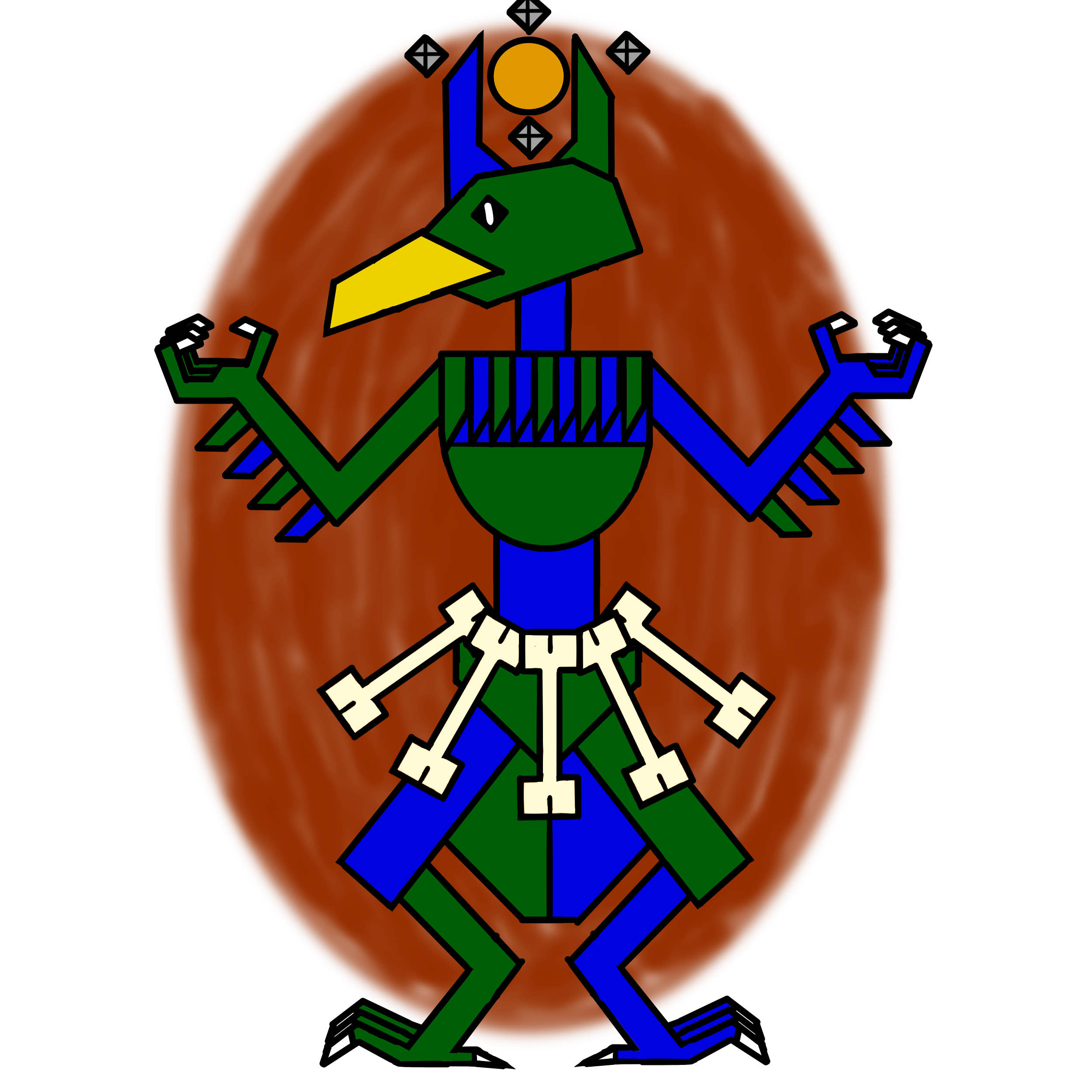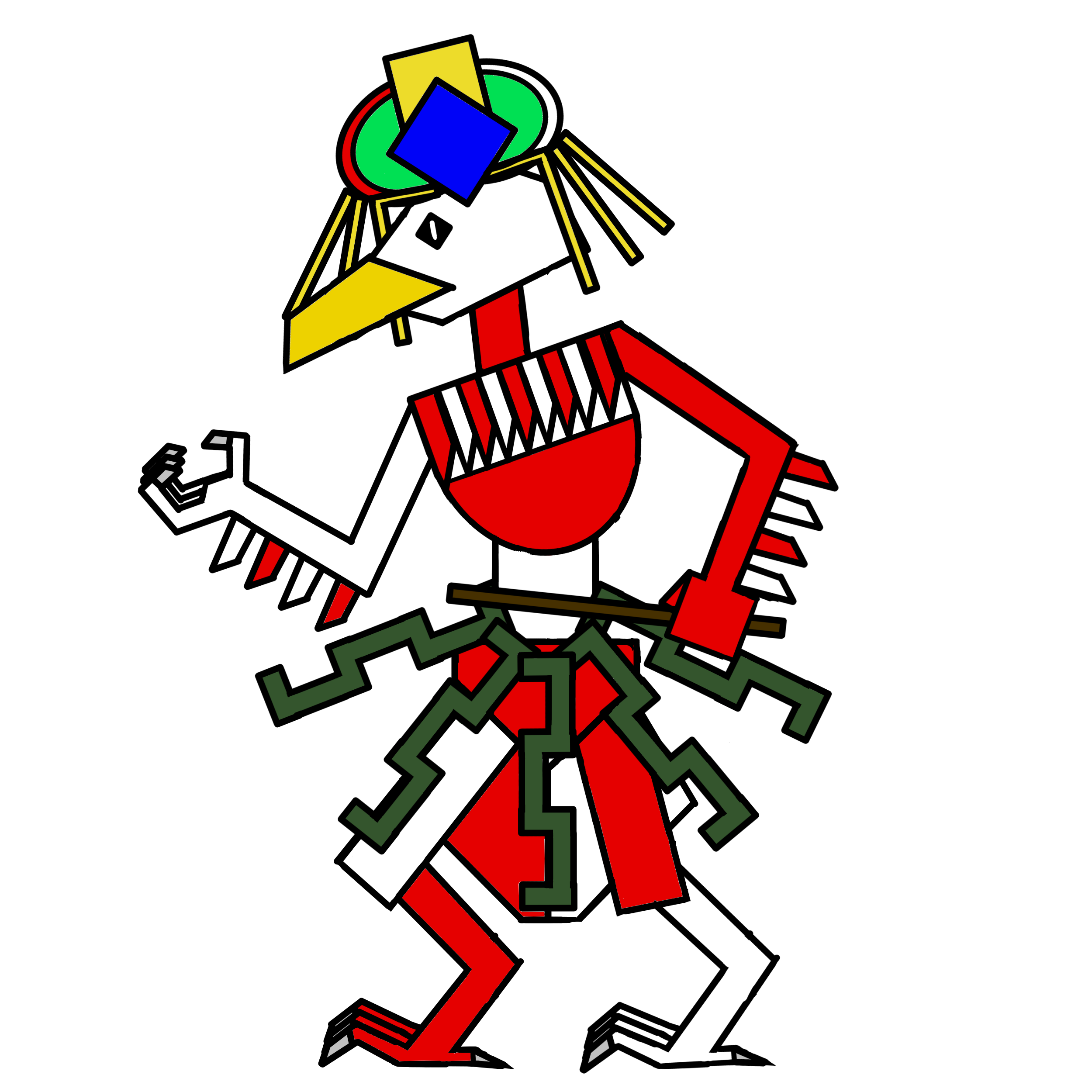Mato-Junja
Mato-Junja is the traditional religion of the Ru-Visha, found in eastern Kairos. It is a faith system built upon concepts of animism, sacrifice, and
Deities
The gods of Mato-Junja are seen as immensely powerful spirits that are to be appeased, lest their wrath befalls on mortal kind. They are typically divided into three categories based on their general spheres of dominion and the realms that they inhabitThe Heavenly Gods
Deities that live within Parakore, or the Heavens, are considered the heavenly deities. Most of them appear as humanoid avians. Ita-Guhi, Lord of the Heavens - described with green and blue feathers and donned in a bone dress, Ita-Guhi is considered to be the chief deity of the Heavenly Gods, despite not being the most powerful deity; his primary domains include the oceans, the sky, the stars, and light; he is betrothed to Mahi-Orate and is the father of Ahi-Rangi, Awha-Rau, and Apa-Hikoi The Serpent of the Sun - described as an impossibly large serpent donned in an elegant headdress, the Serpent of the Sun is a primal deity, commonly recognized as the oldest of the pantheon; he coils himself around the sun and guides it across the sky every day Mahi-Orate, the Hand of Life - described with red and white feathers, donned in a skirt of seaweed and wielding a rod, Mahi-Orate is the sister/wife of Ita-Guhi and is recognized as a goddess of nature, rain, agriculture, fertility, decay, night, and wisdom Ahi-Rangi, the Fire in the Sky - described with red feathers and wielding a cudgel, Ahi-Rangi is the eldest child of Ita-Guhi and Mahi-Orate; his primary domains include love, strength, glory, fire, and smithing; he is associated with cremation Awha-Rau, the Storm in the Sea - described with blue feathers and carrying a net with tons of fish in it, Awha-Rau is the second eldest child of Ita-Guhi and Mahi-Orate; his primary domains include fishing, the seas, storms, knowledge, music, and provision; he is associated with burial at sea Apa-Hikoi, the Grave on the Mountain - described with black feathers, positioned kneeling with vultures picking away as him, Apa-Hikoi is the youngest of Ita-Guhi and Mahi-Orate's initial progeny; his primary domains include time, death, history, and knowledge; he is associated with sky burial Sako - one of the titular brothers from a traditional Ru-Vishan folktale; he is described as being the stronger of the two, with his most famous moment being his ascension into the Heavens; he is now accepted as a god of strength, athletics, Wijo - one of the titular brothers from a traditional Ru-Vishan folktale; he is described as being the smarter of the two, with his most famous moment being turned into Labugu Island after his death; Wijo is honored in the Heavens as a god of roads, travel, trade, and intelligenceThe Ladies of the Moon
The Ladies of the Moon are a set of female deities said to rule over the Moon Villages. Most women that follow Mato-Junja worship this set of goddesses, and their priestesses use the stars and the moons as signs in their divination. Toha-Kume, Mother of the Stars - described as a beautiful woman wearing clothes made of starlight, pouring water out of a vase, Toha-Kume is the chief goddess of the Ladies of the Moon; her primary domains include the night, the moon, the stars, fertility, prophecy, tranquility, and patience; she is very motherly in appearance and personality, being generalized as a goddess of motherhood; however, this does a disservice to her behaviors as a very dangerous and formidable goddess Whetu-Utunui, the Precious Star - described as a woman with a shawl that glows in the dark, Whetu-Utunui is the handmaiden of Toha-Kume; her primary domains include hunting, medicine, and guidance; she is heavily associated with Manene, one of the brightest stars in the night sky that is used by many for navigation Huka-Wahine, the Lady of Waters - described as a woman with white hair, Huka-Wahine is the goddess of the wet season; her other domains include ice, cold winds, and the southern islands Kume-Marama, the Night's Steed - described as a great turtle, Kume-Marama is an ancient goddess responsible for pulling the moons across the sky; her primary domains include the moons, wisdom, fortune, -The Lords of the Underside
The Lords of the Underside are the main set of chthonic deities, embodying the negative aspects of nature such as diseases, warfare, strife, and death. They are worshiped as wardens of the evils found within the seas. Kiahi-Kehe, Great Lord of the Underside - described as a piscine man with black and green scales and wielding a harpoon, Kiahi-Kehe is the chief god and ruler of the Underside; his primary domains are hurricanes, floods, fishing, death, plagues, and justice Kamau-Mahina, the Dweller in the Depths - described as a human woman with ink-stained, and wearing a dress made from squid tentacles, Kamau-Mahina is the wife of Kiahi-Kehe; her primary domains include strife, chaos, hysteria, obsession, and mania Hanga-Mutunga, the Builder of Fates - described as a squid-like figure with black and blue skin, wielding a rope or chain, Hanga-Mutunga is one of the few beings born of the Underside to willing join the gods; his primary domains include magic, mystery, destiny, the depths of the seas, squids, and ink Maunu-Paea, the Stranding Bride - described as a beautiful woman with the bottom half of her body being jellyfish tendrils, The Kakagow - described as a beast with the body of a snake, the maw of a shark, the mane of a lion, and the claws of an alligator, the Kakagow is a divine creature first mentioned in the tales of Sako and Wijo as an antagonist that threatens "the Heart of the Sea"; he is the god of predators, hunting, and butcheryMythology & Lore
Creation Myth
In the beginning of time, there was only the heavens, the night, and the seas, and almost all of the gods were happy with the way the world was at.The Mahi Cycle
The Mahi Cycle is one of two literary cycles that are heralded as religiously important by followers of Mato-Junja. This cycle follows the Mahi family, which is said to come from Mahi-Orate, a Heavenly goddess. Figures such as Mahi-Rotuju, her twin sons Sako and Wijo, the warrior-poetMahi-Rotuju
Full article: Mahi-Rotuju Mahi-Rotuju is one of the most notable figures in both Ru-Vishan history and religion, recognized as a legendary warrior-poet descended from the goddess Mahi-Orate. Stories that she appears inSako and Wijo
Full article: Sako and Wijo One of the most notable stories in the Mahi Cycle is the escapades of Sako and Wijo.The Three Deaths
Full article: The Three Deaths In the practices of Mato-Junja, most Ru-Visha are buried in one of four fashions: earth burial, cremation, burial at sea, and sky burial, with the first method available for everyone, but the latter methods being specialized for particular types of people. This derives from the Tale of the Three Deaths, which follows the three sons of Ita-Guhi and Mahi-Orate, and their search for a way back to Parakore. The three sons, Ahi-Rangi, Awha-Rau, and Apa-Hikoi, were sent to the earth as punishment after they disrupted the celebration of the Serpent of the Sun. They then traversed the land and introduced the arts of blacksmithing, music, and their traditional calendar to the Ru-Visha. However, since creatures can't just ascend to the heavens, they had to come up with new methods of returning home. Ahi-Rangi built a pyre and waited for a full year before flinging himself into the fire. His ashes scattered into the sky and made their way after the sea's gusts carried them up to the heavens. Warriors follow Ahi-Rangi's example, and are the only individuals slated for cremation. Awha-Rau carved a casket out of wood and waited for a full year before wrapping himself in bandages and poking holes into the casket. He sank until his body reached the Underside, where Kiahi-Kehe recognized him as the son of Ita-Guhi and delivered his body back to his father. Painters, musicians, and other fine artists follow Awha-Rau's example, and are the only individuals slated for burial at sea. Apa-Hikoi made a platform of stone atop a nearby mountain and meditated there, letting the local fauna devour parts of him over the course of a whole year. The said fauna, namely crows and wolves, then traveled to the Moon Villages, where Toha-Kume recognized him as the son of Ita-Guhi and delivered his body back to his father. Chroniclers, storytellers, and scholars follow Apa-Hikoi's example, and are the only individuals slated for sky burial.The Constellations
From a religious standpoint, the constellations are vital to life for the Ru-Visha. They revere the night as it dictates their calendar, aids in navigation, and even determines their fishing practices, but this is codified more with the religious explanation for particular constellations. Most of the constellations are depictions of the Heavenly Gods, with some being representations of the Ladies of the Moon. Within the mix of divine constellations comes folk heroes of renown, such as Mahi-Rotuju,Cosmological Views
Parakore/"The Heavens"
Parakore, described as "the Heavens", is a realm found among the sky, and is home to most of the gods, including Ita-Guhi, the Serpent of the Sun, Mahi-Orate, andTaimaiti and Whaea/"The Moon Villages"
Taimaiti and Whaea are the Ru-Visha names for the twin moons of Auvus, which are more commonly referred to as Dirm and Corese by the Morcidians. In the beliefs of Mato-Junja, the moons are believed to be home to two other villages. Ruled by the Ladies of the Moon, the Moon Villages and their respective entities are a tier below those in the Heavens, but still regarded as powerful goddesses of healing, life, guidance, and the stars.Mohiotia/"The Underside"
Mohiotia, commonly called "the Underside", is a realm said to be found at the seafloor. It is described as a realm of darkness, where no mortal eye is able to see anything on its own.Worship
Followers of Mato-Junja participate in ceremonies that involve sacrifices, namely burnt offerings of crops and livestock. It is said that the ashes of the burnt offerings ascend in the sky and meet the Heavens and the Moon Villages. In cases of immense turbulent weather or plague, they will perform seaside offerings, in which livestock is driven off a cliffside and into the sea, as to appease the gods of the Underside.
Priesthood
Priests of Mato-Junja, called Panu-Rangi, are responsible for managing sacrifices to the gods, from burning them to tossing them into the sea. They also are said to have the power to divine knowledge from the gods, namely through one of three ways: slaughtering animals, observing animal behavior, and . Particular subjects divined of depend on the animal involved, typically distinguished by their association with one of the three divine realms: the heavens, the moons, and the seas.
Divination through reading the running blood of slaughtered animals is also called. Panu-Rangi use a special ritual knife, typically made of polished metal or glass, to slaughter an animal, then watch its blood run from the wound.
Type
Religious, Organised Religion
Ita-Guhi
Mahi-Orate
Remove these ads. Join the Worldbuilders Guild











Comments